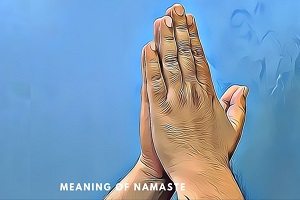Last Updated on 23/12/2024
Hi hello hola aloha Ola Hey Yo Dsao Nee Hau, Konnichi Wa….Namaste

You can greet a person in about 2,790 languages. Greetings are the first point of contact and can be a defining moment in a relationship. They can express your attitude and your approach. They say a lot about your outlook on people. A casual “Hi,” for example, is just that: a way for strangers to greet each other in a non-committal, impersonal way.
Then you can go to another level, another dimension, where a greeting is the finest example of centuries of refined culture. The Indian Namaste is ageless and timeless, dating back millennia. It is a mixture of the word “Namoh” and “aste,” which, in common parlance, means “I bow to you.” What differentiates it is that it is not just a word; it is accompanied by an emotive gesture. Palms joined, a person bows their head, and utters “Namaste,” conjuring up a world of extreme respect given not only to strangers but also to everyone you know, even younger people. “Give respect to gain respect” – and Namaste does just that for you.
Uttering Namaste or “Hi” or “Hello” is simple. However, joining the palms of your hands together and bringing them close to your heart while bowing your head and uttering the word opens up a whole new world of meaning. It shows you care so much that you make an effort. It shows that the feeling comes straight from your heart, extending out through your hands to the tips of the palms, radiating toward the recipient. The inclination of the head is a mark of total respect and acknowledgment of the fact that the person being greeted is worthy of it.
Namaste has a unique charm. You give respect and gain it at the same time. For instance, a grandfather can greet his grandson with a Namaste, and this will, in turn, encourage the young child to respond in the same way, thus learning and continuing a rich legacy.
You say “Hi” or “Hello” when you meet someone, whether a stranger or a friend. You can do the same with Namaste. “Hi” or “Hello” is plain vanilla, but Namaste carries echoes of tradition and dimensions of emotion, all packaged into the simple greeting that welcomes and warms the heart of anyone who receives it. You can just as well say Namaste when parting or taking your leave. This signifies that the person or persons you are leaving are just as worthy of respect as they were when you greeted them, and that your good wishes are with them. If you are leaving the company of people, it signifies respect for all those present, and they, in turn, wish you Godspeed.
Namasteindiatrip.com draws inspiration from the simple Namaste and has woven it into the fabric of its being, reflecting the age-old and honored traditions of India. It greets each guest as royalty at the commencement of each tour, and then, at the end, when you take your leave, gives you the same respectful send-off. You cannot help but feel honored to have been a part of Namasteindiatrip’s tours.


 Call
Call WhatsApp
WhatsApp Enquiry
Enquiry
nice blog